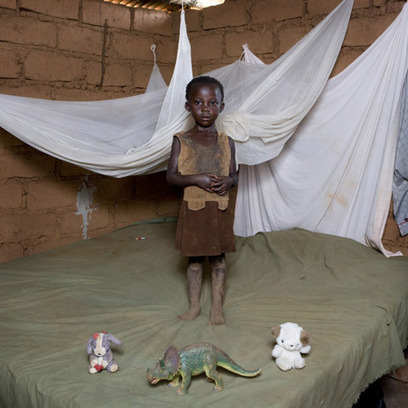"In just a few generations, we have tightly restricted American kids' freedom to roam, play, and become self-sufficient. The percentage of children walking and bicycling to school has plummeted from almost 50 percent in 1969 to about 13 percent today. Although distance from school is often cited as the main barrier to walking and bicycling, many families still drive when schools are close to home. According to the Safe Routes to School National Partnership, driving accounts for about half of school trips between 1/4- and 1/2-mile long — which in most cases shouldn't take kids much more than 10 minutes to walk."
Get Started for FREE
Sign up with Facebook Sign up with X
I don't have a Facebook or a X account
 Your new post is loading... Your new post is loading...
 Your new post is loading... Your new post is loading...
|
Matthew DiLuglio's curator insight,
November 27, 2013 6:40 PM
This is horrifying and really puts things in perspective. Their toys are not what they need. None of these kids had anything creative except for the building blocks... I would have liked to have seen some paints and paintings, because I hugely believe that schools suck the creativity out of people's lives. Toys can be... 'imaginative,' but not really. Toys get put away when a kid turns 10. Then they're in school. Then they're at work... it was interesting to see the farmer girl with farm toys, but seriously, again, creativity should be encouraged at that age. If people are not creative, they become creatures that absorb the habits and things that they are taught, with no ability to deal with new situations, or adapt their environment in a positive manner to better suit themselves or others. I hate the stagnancy of the world today. I used to play guitar in Providence on the streets, I have publically painted at URI, I have given paintings away to friends, and I love sharing ART, which can change the world, if only by one mind at a time. I believe in the butterfly effect and that these kids should have something artsy as their most prized possession, because to not have that is to reflect the corporate importance in society on buying manufactured goods. As for the kid with toy guns, it really isn't my business to speak ill of him, but seriously! He will end up with a TV show like Duck Dynasty one day or something... hope it works out for him.
Lauren Sellers's curator insight,
May 20, 2014 12:01 PM
This shows us how kids from different regions in the world value certain items that to others may seem almost trivial. Around the world everything is seen differently because situations are different. 
GTANSW & ACT's curator insight,
July 21, 2015 4:28 AM
This is an alternative to using "Where children sleep" as an introductory activity. |












Also applies to unfortunate Turkey w/her recent urban transformation wave...